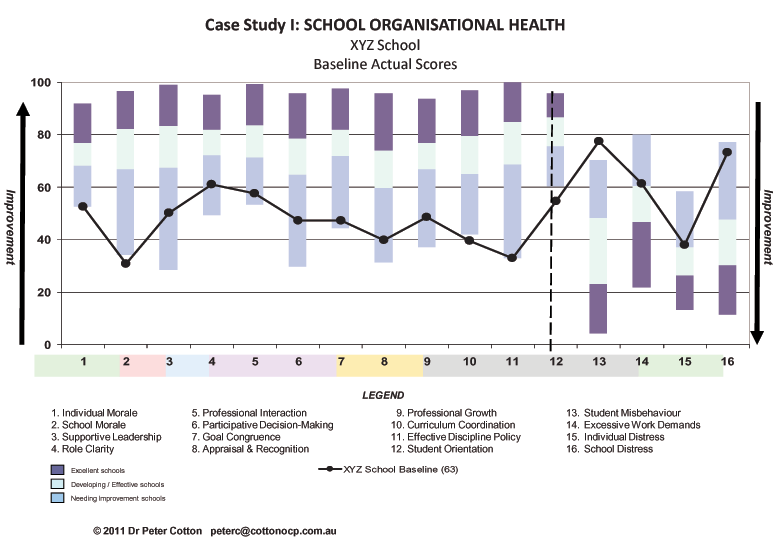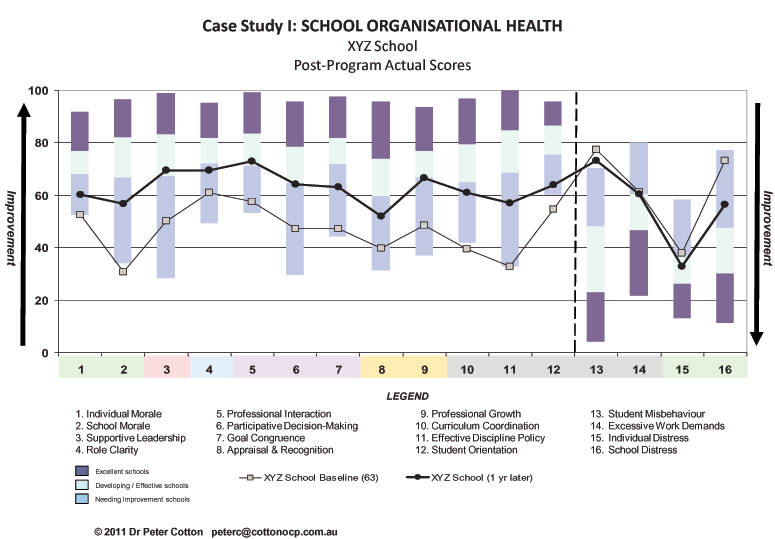They're the voice, try and understand it

According to a recent case study, one under-performing workplace achieved performance improvements across the board, and reduced workers' compensation claims in excess of $1.3 million over three years. How did they find the solution to their problem? They asked their employees.
Organisational and clinical psychologist Dr Peter Cotton recently delivered a presentation on how surveys can be used to improve employee wellbeing and save employers money. The presentation, delivered on 19 April 2011, focused on how an understanding of morale and the role of effective leadership can lead to significant improvements in the workplace.
Surveys
According to Dr Cotton, information gained from Employment Opinion Surveys (EOS) can be used to create a better workplace. Though carefully focussed questions, employers are able to identify aspects of the workplace that negatively impact on organisational performance.
Once the trouble spots are identified, initiatives can be created and implemented to bring about tangible improvements, including, but not limited to, reductions in:
- Workers' compensation claims;
- Employee absenteeism; and
- Workplace bullying and harassment.
The costs associated with implementing EOS can vary depending on the complexity of the survey and the level of results analysis required. Dr Cotton estimates the cost at $10-$50 per employee for the survey and $300-$500 per employee division for the results to be analysed. When considering the benefits, the cost represents a sound investment in a workplace’s future.
Dr Cotton illustrated the real world benefits of EOS through the following case study, which saw initiatives developed from survey results used to extraordinary effect.
Case Study
A survey was conducted in an under-performing school that employed 80 people. The school in question:
- Had been through a forced amalgamation;
- Was performing poorly on established performance indicators; and
- Had seen other initiatives fail to improve its performance.
The Program
- Operated for 12 months;
- Focused on coaching and leadership development; and
- Implemented initiatives according to needs the survey identified (e.g. effective leadership collaboration, improved communication and improved teamwork).
Indicators before the Program

As the graph illustrates, the school was failing in virtually every indicator of performance.
Significantly, the school was suffering from a cultural problem. Indicators in Individual Morale, School Morale, Effective Discipline Policy, Student Orientation and Student Misbehaviour all displayed as ‘needing improvement’ at extreme levels, or were off the charts.
The school’s professional and interpersonal foundations were failing, and change was needed from the ground up to develop a more cohesive and professional culture. A focus on leadership proved to be an effective initiative.
Indicators after the Program

As the graph above demonstrates, the program was a clear success, achieving improvements in every single performance indicator.
Financial Implications
.gif)
While the performance improvements alone made for a successful program, a significant outcome was the considerable savings resulting from building a strong workplace culture.
The school (comprised of 80 employees) saved a total of $1,378,783 over three years due to a significant reduction in workers' compensation costs alone.
The workplace benefited from the development of a coherent, inclusive culture that nurtured leadership skills and collaborative efforts. As a result, workers were happier at work and their collective mental wellbeing was improved.
The most exciting thing to come out of the program were improvements (and consequential savings) resulting from a focus solely on leadership and team development. No initiatives were implemented in the areas of claims management or early intervention. If such initiatives had been implemented alongside, further improvements in workplace health and performance, and additional savings may have resulted.
The Bottom Line
Dr Cotton’s case study provides strong evidence that Employment Opinion Surveys can identify issues and inefficiencies in a workplace. Once identified, management leadership programs can be developed to create healthier employees, greater productivity and improved cost savings.
Why then, do EOS continue to be underutilised? Dr Cotton suggests that EOS are a tool that employers have been reluctant to take advantage of, feeling that the existence of internal Employment Assistance Programs (EAPs) already perform similar functions. However, Dr Cotton warns that EAPs are generally ineffective and reactive, so employers may be short-changing both themselves and their workers.
Employee Opinion Surveys represent a win-win proposition for employers and employees alike. In the short-term, they hold the potential to produce a healthier workplace that is more productive and cost effective. But beyond that, through identifying and addressing existing operational issues, EOS can provide the basis for a strong workplace culture that ensures enduring organisational success.
Dr Peter Cotton is a Clinical and Organisational Psychologist. Peter_Cotton@medibank.com.au

